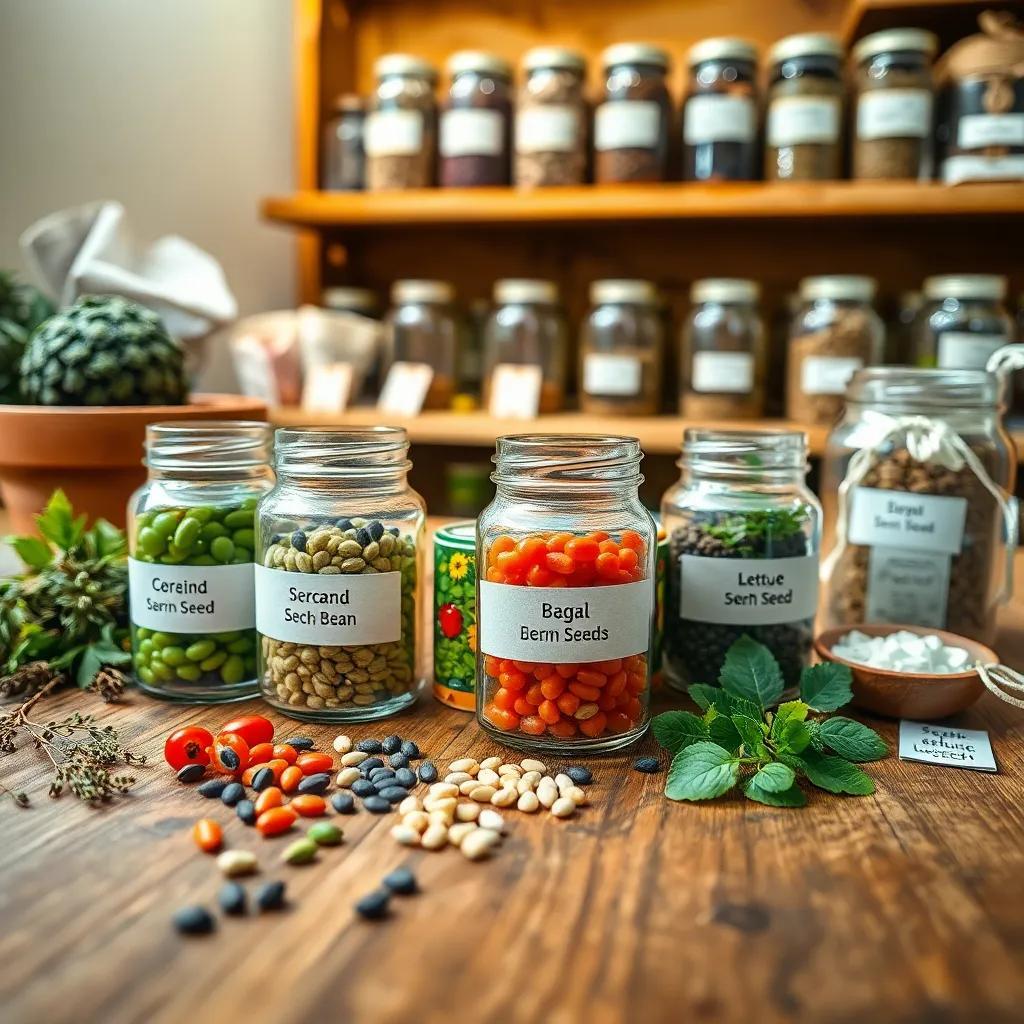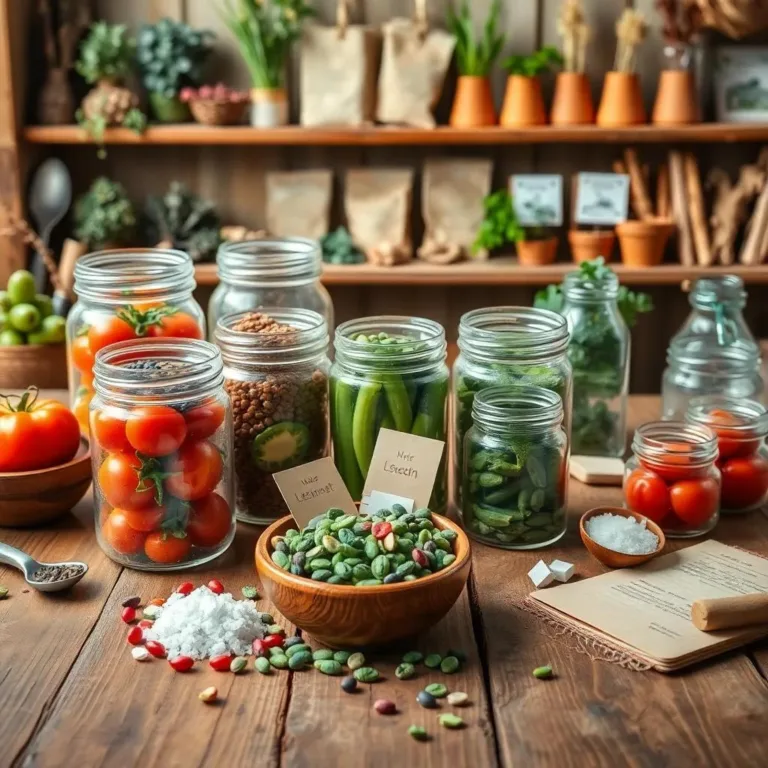Have you ever wondered how long your seeds will last before they turn into vibrant plants? Well, you’re in the right place! In this article, I’ll share some exciting insights about seed lifespans, how to store them properly, and tips for testing their viability. Let’s dig into the world of seeds and discover what it takes to grow a flourishing garden!
Factors Influencing Seed Lifespan
When it comes to seed longevity, there are several key factors that can affect how long they stay viable. Understanding these factors will help me keep my seeds around for a while, ensuring a bountiful garden! Let’s explore what really influences seed lifespan:
- Seed Type: Different plants have different lifespans. For instance, orthodox seeds, like tomatoes and beans, can last for several years if stored properly. On the other hand, recalcitrant seeds, such as those from tropical fruits, can’t stand being dried out and have a much shorter shelf life.
- Moisture Content: Seeds are like us; they don’t like too much moisture! If they are too wet, they can rot. If they’re too dry, they can become brittle and lose their ability to germinate. The sweet spot is usually around 5-8% moisture.
- Temperature: You wouldn’t want to be in a hot oven all day, and neither do seeds! They prefer cool environments for storage, ideally between 32°F (0°C) and 50°F (10°C). Keeping seeds cool helps slow down their metabolism and keeps them lively for longer.
- Light Exposure: Seeds need darkness to stay dormant. Light can trigger them to sprout, which is no good when they’re waiting in storage! Storing them in opaque containers can help out a lot.
- Seed Health: Healthy seeds are like healthy veggies — they last longer! Always harvest seeds from healthy plants. Seeds that show signs of disease or damage won’t last long.
Understanding these factors is like having a secret recipe for success! When I consider these points, I’m more likely to have thriving plants sprouting from my seeds.
Optimal Conditions for Seed Storage
Now that I know what influences seed lifespan, let’s talk about how to store these precious gems properly. Creating the best environment for seed storage is a game-changer in keeping them viable for future planting!
- Temperature: Keep seeds in a cool place! The ideal range is still between 32°F (0°C) and 50°F (10°C). This often means storing them in a spare pantry or a basement.
- Humidity: Just like I don’t want to live in a swamp, seeds don’t like high humidity either! A relative humidity of around 30-40% is perfect. I sometimes add silica gel packets or a bit of rice to my storage containers to keep things dry.
- Light: I always make sure to keep my seeds in the dark. Using opaque containers or placing seed packets in a dark corner keeps them protected from light.
- Airflow: Seeds need some air but not too much! I choose containers that allow air circulation, like paper envelopes or breathable materials. This helps avoid excess moisture build-up.
- Containers: I avoid plastic bags! They trap moisture. Instead, I opt for glass jars or metal tins. These types of containers keep seeds safe from light, moisture, and air.
- Location: I pick a spot that stays cool, dry, and dark. I steer clear of areas with temperature swings or direct sunlight. A cozy shelf in my pantry works like a charm!
By following these storage tips, I’m making sure my seeds are ready to sprout when the time comes. Happy gardening! 🌱

Common Seeds and Their Typical Lifespans
When I think about my garden, one of the most exciting aspects is the variety of seeds I can choose from! Each type of seed has its own typical lifespan, and knowing this can help me plan better for each planting season. Here’s a handy guide to some common seeds and how long they usually remain viable:
- Tomato Seeds: These little gems can last around 4-6 years when stored properly. With their rich flavor, they are always a favorite in my garden!
- Bean Seeds: Most beans have a moderate lifespan of about 2-3 years. They’re easy to grow and often produce a great harvest.
- Lettuce Seeds: Unfortunately, lettuce seeds are not as long-lasting. On average, they stay viable for only 1-2 years, so I make sure to use them sooner rather than later!
- Carrot Seeds: These seeds typically last around 1-3 years. It’s wise to plant them promptly for the best chance of germination.
- Pepper Seeds: Like tomatoes, pepper seeds can also last for 4-5 years if stored well! I love growing different varieties for a spicy kick in my dishes.
- Radish Seeds: With a shorter lifespan of about 1-3 years, I definitely keep an eye on these to plant them at their peak.
- Cucumber Seeds: They have a decent lifespan of 3-5 years, making them a reliable choice for my summer garden.
Knowing the typical lifespan of seeds helps me rotate my stock and avoid using old seeds that might not sprout. Who doesn’t want a thriving garden?
Testing Seed Viability Before Planting
Before I get my hands dirty and start planting, I like to make sure my seeds are still good to go! Testing seed viability is just like a quick check-up for my gardening pals. There are a few simple methods I use to see if my stored seeds are still alive and kickin’:
- Paper Towel Method: This is my go-to! I moisten a paper towel and place a few seeds on it. Then, I fold it over and keep it in a warm spot. After about 7-10 days, I check to see how many have sprouted. It’s such a fun surprise!
- Soil Sowing Method: For this method, I plant a few seeds in small pots filled with potting soil. I keep the soil moist and warm to see how many seeds pop up. It’s a great way to simulate real planting conditions.
- Float Test: Perfect for larger seeds! I fill a container with water and drop the seeds in. Healthy seeds sink, while the ones that float might be duds. Easy peasy!
- Seedling Emergence Test: I sow a batch of seeds directly in my garden or raised beds and monitor how many successfully sprout. It gives me a clear picture of their germination potential.
- Sowing in Seed Trays: This is similar to the soil method, but I use seed trays. It’s great for starting a lot of seeds at once!
By testing seed viability, I can avoid disappointment when planting and make adjustments as needed. Plus, I get to see my garden plans come to life!
Best Practices for Long-Term Seed Preservation
Keeping my seeds in great shape for future planting is important! I like to follow some best practices for long-term seed preservation so my garden is always ready to bloom. Here are my go-to strategies:
- Proper Harvesting: I always wait until seeds are fully matured before harvesting. Seeds from healthy, ripe fruits are much more likely to germinate.
- Drying Seeds: After harvesting, I make sure to dry my seeds thoroughly. I spread them out in a single layer and let them air dry before storage. It’s like giving them a spa day!
- Cleaning and Sorting: I don’t want any debris or chaff in my seed storage, so I clean and sort my seeds. This helps me keep only the best, high-quality seeds.
- Using Suitable Containers: I look for moisture-proof and airtight containers. Glass jars or metal tins work wonders for seed storage. They keep unwanted moisture at bay!
- Adding Desiccants: To keep things extra dry, I add silica gel packets or a little rice to my storage containers. It’s an easy trick to balance humidity!
- Labeling and Dating: I make sure to clearly label each container with the seed type and the date I collected them. This way, I know what I’m working with!
- Choosing the Right Location: I store my seeds in a cool, dark, and dry spot — such as a pantry or a basement closet. Avoiding temperature fluctuations is key!
By following these simple but effective practices, I can help my seeds stay viable long into the future. Who doesn’t want a thriving garden every year? Happy planting! 🌱

